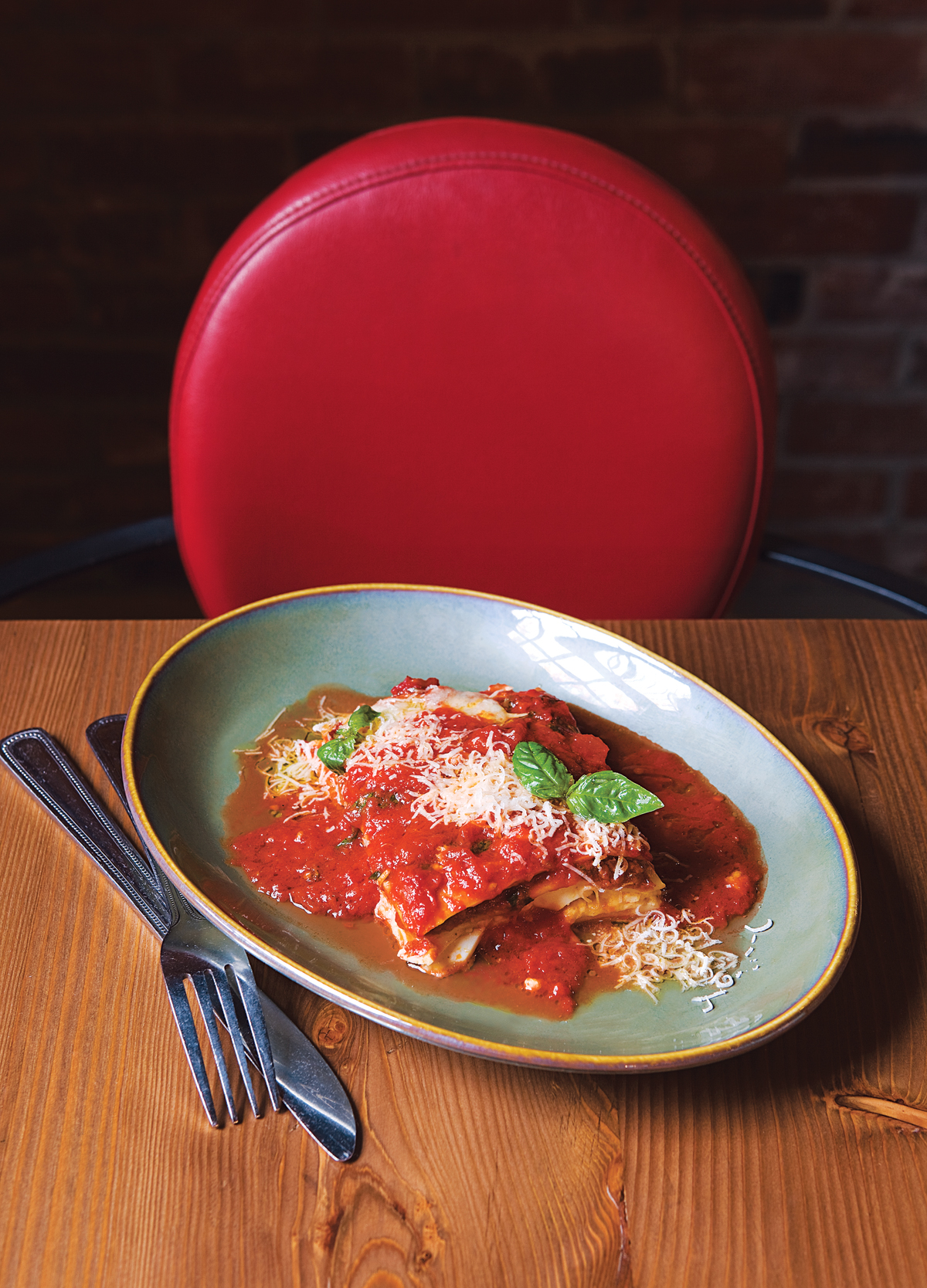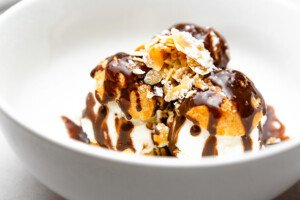Dining Out: Il Casale

Photograph by Kate Kelley
Food writers and gourmands—really, anybody who’s got a favorite kind of food—all have a dream restaurant. Mine is a place where I can enjoy a meal like the ones Italian grandmothers make for their families (which in Italy is often, considering that 50-year-old men still mean their mother’s house when they say, “I’m having lunch at home”).
[sidebar]Dante de Magistris had just such a grandmother, from the province of Avellino, south of Naples, which for a hundred years sent scores of immigrants to the Boston area (including Mayor Tom Menino’s grandparents). De Magistris’s father, Leon, emigrated relatively late, and Dante had a chance to see his relatives cook both in Belmont, where the family settled, and back in Italy. He often visited the region around Naples, and apprenticed at what was then southern Italy’s only Michelin three-star restaurant, Don Alfonso, situated on the Amalfi Coast.
I first had a meal cooked by the family—Dante then as now manning the stove—more than 10 years ago, on the terrace of their home in Belmont Center. Mutual friends told me de Magistris was poised to go far, and of course they turned out to be right. He and his brothers, Damian and Filippo, today run Dante, an elegant and highly praised restaurant in Cambridge’s Royal Sonesta hotel. I praised it, too, but with some reluctance. Like all ambitious young chefs, de Magistris aimed to innovate; he wanted to make a name with his dishes, to be a player in the modern food world.
Thank heaven he got his wish. Because that freed him up to open Il Casale, a few doors down from where he was raised in Belmont. Now, the food he grew up eating and loving we can eat and love, too.
The combination of de Magistris, his brothers, his father, and one of Boston’s best Italian cooks, Daniele Baliani (who came to help out at the last minute, and now is in the kitchen nearly every night), made it hard for me to be an impartial judge of Il Casale, though I did find a few flaws. The menu was a little long, the salt sometimes too heavy, the fresh garlic too pronounced, and the meats something of a letdown (as main-course meats generally are in Italy). But overall, I wanted to keep eating and eating—and at several meals, I did.
Located in a converted firehouse, the large restaurant was packed during my three weeknight dinners, and still fairly full when my guests and I left at around 10. The very un-Italian, very Belmont High servers seemed able to handle the pace, and quite knowledgeable about the dishes.
Among the menu’s strongest suits—and the things to build your meal around—are the antipasti, here called sfizi. Though tapas-sized, the sfizi are a bargain at $5 apiece. I couldn’t get enough of the peperonata (stewed red peppers) on bruschetta, which de Magistris calls “one of my favorite things growing up”; the red strips are candylike, as he says, and the vinegar cuts the sweetness just enough. The meatballs were also a standout: While the traditional carne version, a grandmotherly specialty made with milk-soaked bread, was too full of garlic shards, we finished every bite of the ground-pork meatballs studded with melting provola, a cow’s-milk cheese that’s milder than most provolone. The sauce was a pig’s-head reduction, a gelatinous syrup as sophisticated as a French demi-glace (de Magistris says it’s the only way he could match the thickness of his grandmother’s pan-juice sauce). Another variation was baccalà, or salt cod balls—mildly salty, only lightly fishy, and sweet from the pine nuts and golden raisins in the tomato sauce. There were no bites of these left, either.
The carpaccio was fine, but much more interesting was the roast pork loin sliced paper-thin and served with tuna-and-caper tonnato sauce, which yielded a great take on veal tonnato. Though I found the Tuscan chicken-liver bruschetta, usually a rustic dish, too mousselike and refined and its herb seasoning too delicate, it certainly had good liver and butter flavor. And the cream-filled mozzarella called burrata, from Puglia (it’s express-mailed from Italy to the restaurant), was simply heaven: It was in the best condition I’ve ever found outside its home territory, and in no need of the Sicilian oregano and pistachios sprinkled over it.
De Magistris uses far more homemade pasta than is usual around Naples, where the standard is dried, so his chitarra in an egg and guanciale carbonara sauce ($9/$17) didn’t have the bite I expected. One of his hard-flour pastas, pennette (“quill” tubes cut so short I’d have called them ditalini), is served in a fragrant tomato broth with fava beans ($9/$17); I hope it never comes off the menu. As for the lasagna ($11/$19), well, back to ecstasy: It’s exactly what a grandmother spends days making, with feather-light sheets of tender pasta and a creamy béchamel made even more so by slices of buffalo-milk mozzarella that melt into the sauce. The filling is just a bit of ground meat and slices of hard-boiled egg (a novelty for me), and, as with the best lasagna, it’s far lighter than one would expect. Once you try this, you’ll know how lasagna is supposed to taste.
For main courses, fish is the best bet—namely, the wood-grilled whole trout ($21) stuffed with citrus and herb-and-garlic salsa Genovese. I can’t remember ever being served better trout; maybe it’s because de Magistris cleans the fish at the restaurant, so it tastes fresher. The mixed grill of scallops, shrimp, calamari, and sardines ($19) was expert, but nothing else was a must, and the fritto misto ($18) was a leaden, oily disappointment.
The meats were, in true Italian fashion, sliced or pounded thin. I liked the Milanese-style chicken ($16), a thigh (which boasts a richer flavor than the breast) topped with a light layer of melted Auricchio cheese. Also good were the thin lamb chops ($24), an unusual-for-America cut that included bone and tenderloin and was grilled well done, as is the Italian style.
Another genuine Italian restaurant experience: None of the desserts—which tend to be perhaps too refined—were really worth saving room for. Tiramisu ($9) was the most fought-over item at our table, though I preferred the airy ricotta pie ($8).
Simply put, dining at Il Casale is very much like dining in Italy. The food is simple and abundant, with small differences most Americans aren’t used to (like that thin-cut lamb) and a few refinements (like that silken pork-meatball sauce). You’ll write your own list of favorites here in short order. And you’ll wish—and wish hard—that Il Casale were a short walk from your house, not just those of the lucky neighbors the chef grew up with.


